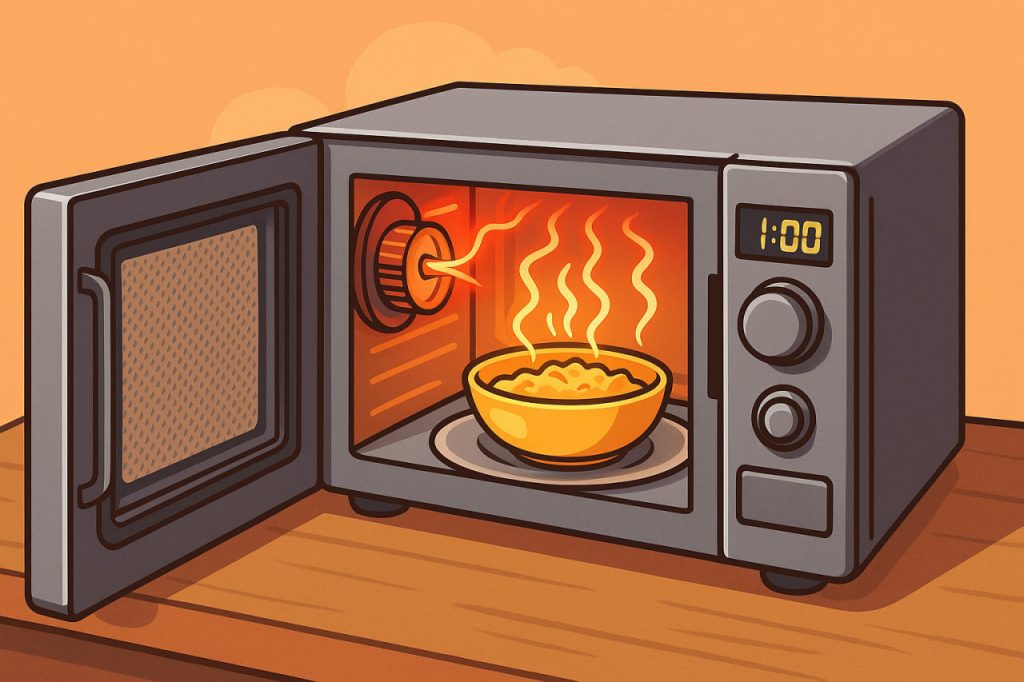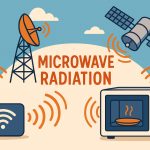A microwave oven is a common kitchen appliance that heats and cooks food using a form of electromagnetic radiation called microwaves. These are waves of energy that lie between radio waves and infrared light in the electromagnetic spectrum. Unlike conventional ovens, which heat food from the outside in, microwave ovens heat food from the inside out — quickly and efficiently.
The core idea is simple: microwaves cause water molecules in food to vibrate, generating heat through friction. This heat then cooks the food.
Inside the Microwave: Key Components
A typical microwave oven consists of the following main parts:
- Magnetron: The heart of the microwave, it converts electricity into microwave radiation.
- Waveguide: Channels the microwaves from the magnetron into the cooking chamber.
- Turntable: Rotates the food to ensure even exposure to the microwaves.
- Metal Cavity: Contains the microwaves so they bounce around and focus on the food.
- Door with Mesh Screen: Blocks microwaves from escaping while letting you see inside.
Microwaves are typically generated at a frequency of 2.45 gigahertz (GHz), which is ideal for agitating water, fat, and sugar molecules.
How Microwaves Cook Food
Here’s what happens when you press “Start”:
- The magnetron emits microwaves.
- These waves bounce around inside the metal chamber.
- Microwaves penetrate the outer layer of the food (usually a few centimeters deep).
- Water molecules inside the food begin to vibrate rapidly, creating heat through molecular friction.
- The heat spreads by conduction, cooking the food.
Since microwaves primarily excite water molecules, dry foods heat poorly without added moisture.
Why Metals Are Dangerous Inside
Metal objects reflect microwaves instead of absorbing them, which can cause:
- Arcing (sparks),
- Damage to the magnetron,
- Fire risks.
This is why it’s important to avoid placing metal utensils, foil, or containers inside a microwave unless they are microwave-safe.
Safety and Efficiency
Microwave ovens are safe when used properly:
- The metal body and mesh in the door contain the radiation.
- Once the door opens, microwave emission stops instantly.
- Modern units are highly efficient, often using less energy than traditional ovens for heating or reheating.
However, they don’t brown or crisp food well, as they don’t reach the high temperatures of baking or frying.
Glossary
- Microwave — a type of electromagnetic wave used to heat food by agitating water molecules.
- Magnetron — a vacuum tube that produces microwaves in the oven.
- Friction heating — heat generated when molecules vibrate and collide.
- Conduction — transfer of heat through direct contact from hot parts of food to cooler ones.
- Electromagnetic spectrum — the range of all types of electromagnetic radiation.


